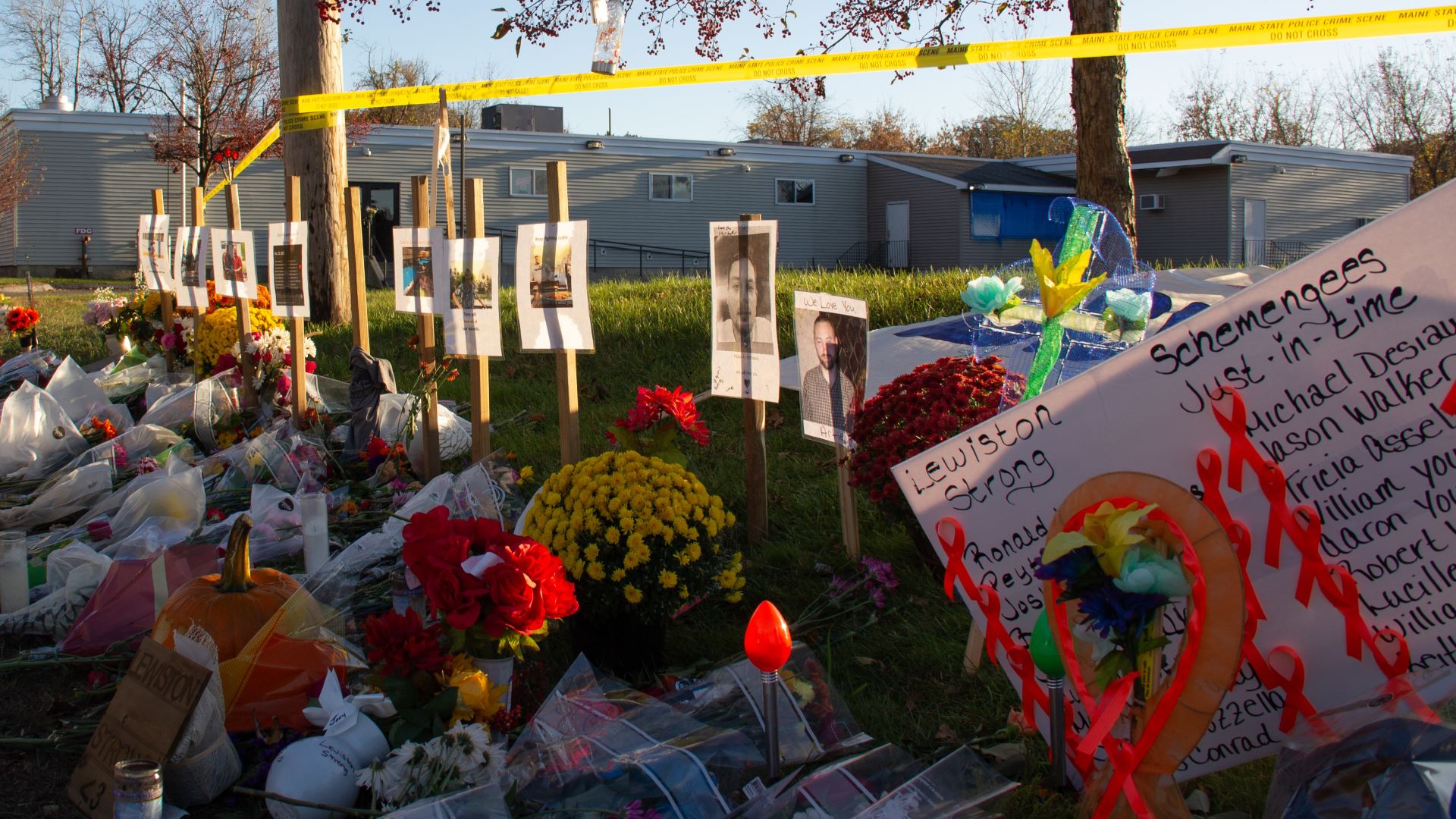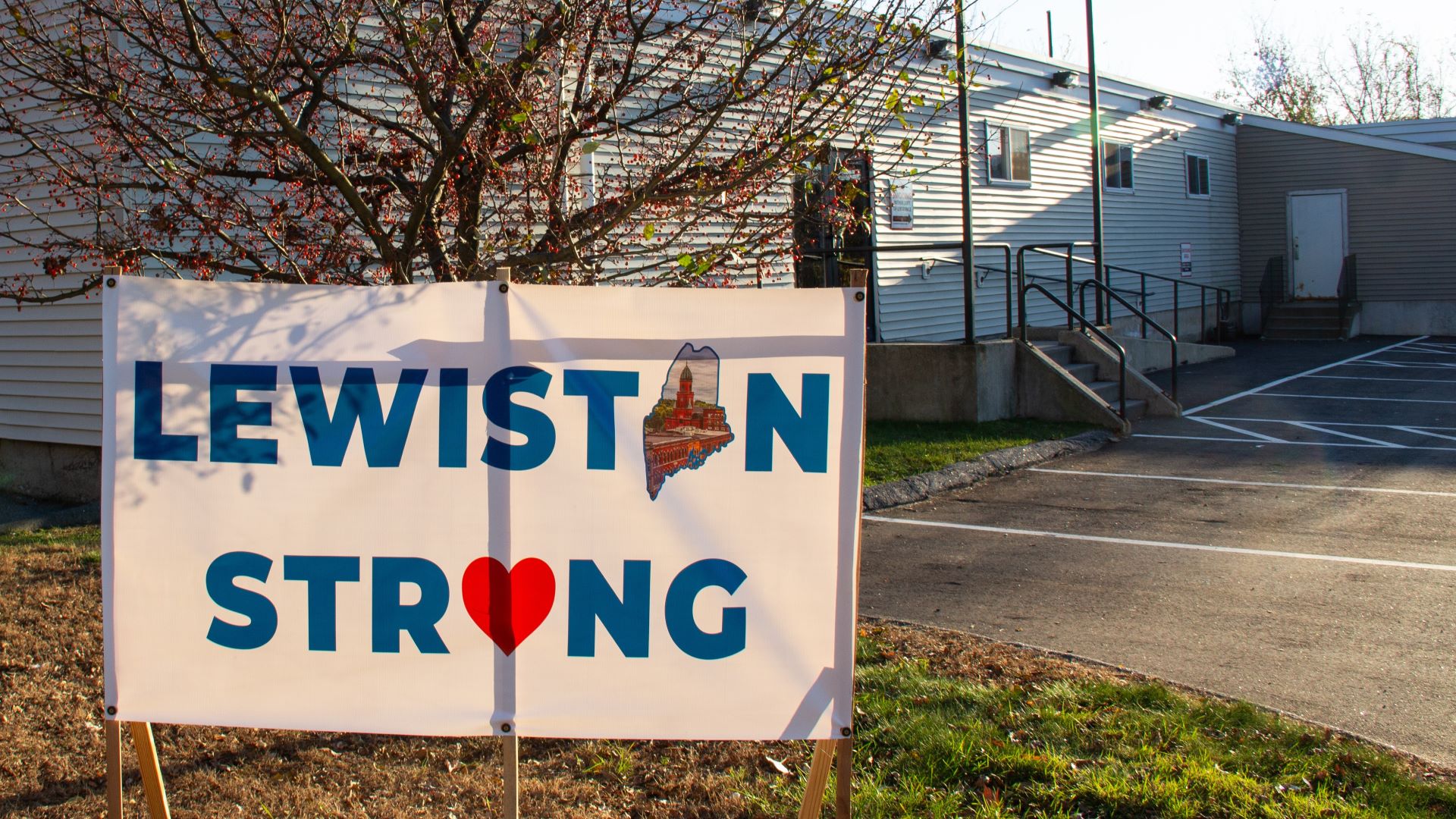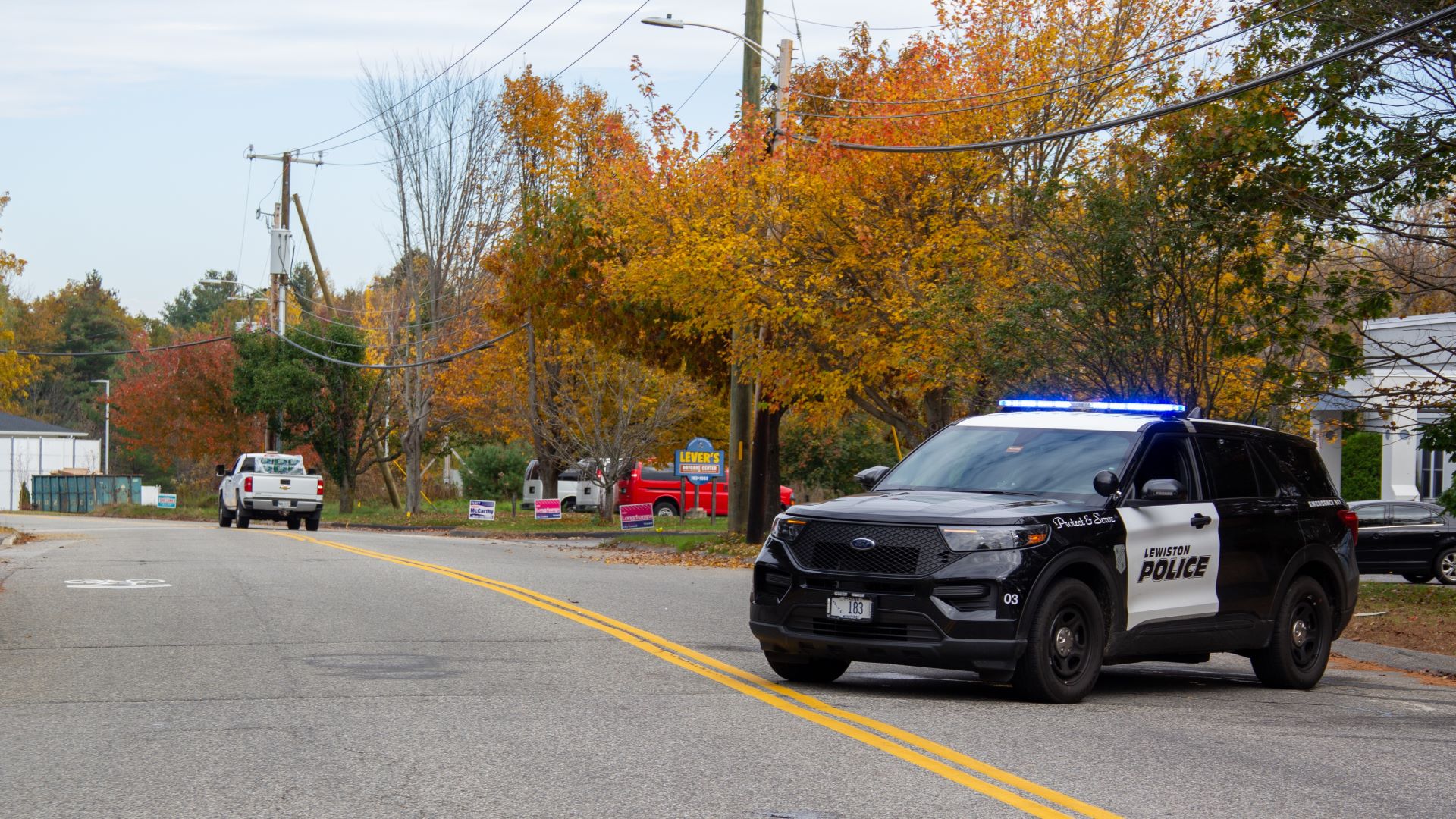Editor’s note: This story contains references to suicide.
When a bill to strengthen Maine’s yellow flag law went into effect earlier this month, Sagadahoc County Sheriff Joel Merry said he felt a sense of relief.
“I think this is one of those cases where we learned from the past,” Merry said.
The law — and Merry’s agency — have received a good deal of scrutiny since the mass shootings that killed 18 people and injured over a dozen more in Lewiston last October.
In the days following the tragedy, Merry disclosed that two of his deputies had attempted to conduct welfare checks on the shooter, Robert Card, but were unable to make contact.
Earlier this year, the deputies told an independent commission that they couldn’t start the process for a weapons restriction order to take Card’s firearms because they weren’t able to bring him into protective custody.
Maine’s yellow flag law, which went into effect in 2020, says an officer with “probable cause to believe that a person may be mentally ill and that due to that condition the person poses a likelihood of serious harm,” can take someone into protective custody, usually at a hospital, for an immediate examination.
There, a medical practitioner, on site or via telehealth, conducts an assessment. If the person is found to pose a “substantial risk in the foreseeable future of serious physical harm” to himself or others as manifested by recent behavior, the order goes to a judge for a final endorsement. Only with the judge’s sign-off may an officer remove weapons from a person.
In its final report, issued this week, the independent commission said “although the person must be physically taken into protective custody to start the yellow flag process, the Sheriff’s Office had probable cause to take Card into protective custody.”
The officers, in reports and testimony, said they were unable to coax Card out of his house to bring him in, and were unable to start the protective custody process because they were “unable to lay eyes on him.”
“I can’t kick in the door,” Sgt. Aaron Skolfield, the Sagadahoc deputy who attempted the September welfare check, told the commission. “If I had kicked in the door, that would have been against the law.”
‘A good tool’
That process changed earlier this month, when a law to “strengthen public safety by improving Maine’s firearm laws and mental health system” went into effect. The legislation, proposed by Gov. Janet Mills, was one of several gun reform measures that passed this spring.
Under the changes, officers can now apply for a protective custody warrant, which is meant to make it simpler for law enforcement to respond to threats of violence.
How exactly this will affect law enforcement’s approach to weapons restriction orders remains to be seen — so far, just one agency has successfully petitioned for a warrant. In interviews, officers said they expect it will make it easier for agencies to work together and could allow them to forcibly enter a residence if necessary, though some warned of the risks associated with this step.
A Maine Monitor analysis of data from the attorney general’s office found that use of the yellow flag law exploded after last October’s shootings. During the more than three years between when the law went into effect in July 2020 and the shootings, the state saw, on average, two weapons restriction orders per month. Since then there have been an average of 32 per month.
The independent commission’s final report acknowledged that officers said the weapons restriction order process took too long and was “burdensome,” particularly for smaller law enforcement agencies.
Cumberland County Sheriff Kevin Joyce, in March testimony supporting the bill, told lawmakers he was most concerned that the previous version of the law had “no provision for a law enforcement agency to act on an individual who does not communicate with the police.”
He described a situation in which deputies attempted multiple times over several days to reach a man who, according to relatives, had been in the military, been diagnosed with post-traumatic stress disorder, and recently assaulted a co-worker, his brother and sister-in-law. Joyce said relatives witnessed him pacing on his property day and night while wearing tactical gear and carrying an AR-15.
For three days, deputies surveilled the man’s home around the clock. Ten days after relatives called the sheriff’s office to report their concerns, the man left his residence, a neighbor called the office and a deputy who happened to be in the area was able to bring him into protective custody. The sheriff’s office obtained a weapons restriction order last December.
“The law enforcement agency may have all kinds of probable cause to take someone into protective custody for a yellow flag action, but they must first have physical contact with the individual,” Joyce said.
With a warrant, officers don’t have to hope an uncooperative individual will eventually leave a residence in order to take them into protective custody.
When applying for a protective custody warrant, officers must include an affidavit establishing three things: probable cause that the person may be mentally ill and due to that condition presents a likelihood of serious harm; probable cause that the person possesses, controls or may acquire a dangerous weapon; and that the officer made reasonable attempts to take the person into custody without a warrant.
Merry said this is a “relevant and good tool” for officers unable to “put your hands on the person to take them into protective custody,” such as when a person refuses to open the door.
The Sagadahoc County Sheriff’s Office completed 16 weapons restriction orders as of Aug. 19, the third-most of any agency in the state — all in the past 10 months. Deputies completed their first order last Nov. 8, exactly two weeks after the Lewiston shootings.

Maj. Matt Gagné, who heads Sanford Police’s mental health unit, agreed the warrant is another “tool in an officer’s toolbelt.”
But, he said, it should be exercised with caution. Attempting to use a warrant to enter the home of a person who refuses to answer the door, has made violent threats and has access to weapons, could be dangerous, he said.
“It can be high risk for the officer,” he said. “It can be high risk for the individual.”
As of Aug. 19, the York County agency has completed 18 orders, the most of any agency other than the state police. Eleven were initiated after the Lewiston shootings.
Gagné said many of the orders were completed in conjunction with Sanford PD’s mental health unit, which includes two police officers, a mental health clinician and an OPTIONS (Overdose Prevention Through Intensive Outreach Naloxone and Safety) liaison via Sweetser.
The unit has found ways to streamline aspects of what law enforcement agencies statewide have said can be a time-consuming and cumbersome process, from providing officers with digitized forms on iPads to using the expertise of the department’s clinicians, he said.
Still, he’s not sure what executing a protective custody warrant will look like in practice.
“We’re going to have to cross that bridge when we come to it and we’re going to have to exercise extreme caution,” Gagné said.
As of Aug. 19, one agency has successfully petitioned for a protective custody warrant, according to records from the attorney general’s office requested by The Monitor.
Within hours of the law going into effect on Aug. 9, Bath Police submitted an affidavit for a protective custody warrant for a 26-year-old man who officers said made multiple threats against them after a disorderly conduct arrest days earlier, Chief Andrew Booth told The Monitor. Booth said his department worked with police from Wiscasset, where the man resides, and that officers there ultimately brought him into protective custody. The weapons restriction order was completed on Aug. 10.
Booth said because Bath PD already had probable cause and because the man refused to let officers into his home, it was more efficient for his agency to seek a protective custody warrant than it would be to pass along the information to Wiscasset and hope that they had enough probable cause to bring him into protective custody. The warrant allowed Wiscasset PD to bring the man into protective custody without having to establish probable cause themselves.
Conflating mental illness with violence
For a judge to issue a protective custody warrant, at no point does an officer need to establish probable cause that the person committed a crime — only that the officer believes the person is at risk of causing harm due to a mental illness and likely has access to weapons.
Using mental illness as the foundation for a weapons restriction order has concerned Hannah Longley, the clinical director of advocacy and crisis interventions for the Maine chapter of the National Alliance on Mental Illness, since the law went into effect four years ago.
She’s now even more concerned that an officer can seek a warrant based on the presence of a mental illness.
“NAMI Maine cannot support legislation in which constitutional rights of the second amendment are predicated on an individual’s disability, the presence of mental illness, which is not a known risk factor for violence,” Longley said in testimony before the legislature’s judiciary committee.

The American Civil Liberties Union of Maine also opposed the change.
“Maine law already inappropriately allows a person’s mental illness to be a prerequisite for protective custody instead of just their behavior,” policy counsel Michael Kebede said in testimony.
The bill “doubles down on this stigmatizing and harmful conflation,” he said. “Having a mental illness is not a crime, nor does it make a person inherently dangerous. A mental illness is a health condition.”
“Just because someone’s experiencing a mental health crisis and they have firearms does not mean that they will necessarily be violent,” Longley told The Monitor.
Longley, who regularly works with law enforcement and trains officers on crisis intervention, said data on law enforcement interactions with people experiencing mental health crises shows the “vast majority” of individuals stabilize at the scene or voluntarily go to a hospital for further assessment and care.
She referenced research that found poverty, abusive parents, membership in an organized hate group or gang, or being young, male and angry outweighed mental illness as risk factors for violence.
The Monitor’s analysis found nearly three-quarters of the 378 weapons restriction orders completed since July 2020 mentioned suicidal thoughts or attempts.
Of the instances that mentioned suicide, more than 86 percent of the individuals were male. The average age was 40.
According to data from the Centers for Disease Control and Prevention, nearly 90 percent of gun deaths in Maine between 2018 and 2022 were due to suicide, much higher than the national average of 57 percent.
“We do openly acknowledge that restricting access to lethal means is incredibly beneficial” to suicide prevention, Longley said. “Our concern is that the issuance of the warrant is based on the foundation of a mental health crisis or the presence of mental health symptoms as opposed to, again, those concrete risk factors.”
She emphasized that it’s important to provide care to a person experiencing a mental health crisis as early as possible in the least restrictive setting possible.
Another gun reform measure that went into effect this month, a mandatory 72-hour waiting period on gun purchases, provides what Longley called a critical “cooling down” period where a person experiencing suicidal thoughts can get connected to mental health resources.
Merry, the Sagadahoc County sheriff, could not recall a weapons restriction order in which a person threatening suicide had recently purchased a gun, but said there have been cases where a person expressed suicidal thoughts and did not own already own a weapon.
“There’s been a lot of research done across the country around the efficacy of 72-hour waiting periods in terms of reducing suicide,” he said. “So I think, you know, the research speaks for itself.”
If you or someone you know is in immediate danger, call 911. If you or someone you know is in crisis, call or text the free, confidential, 24/7 Maine Crisis Line at 1-888-568-1112 or the national Suicide Crisis Lifeline at 988 for immediate assistance. For additional information, visit NAMI Maine’s resource database.







